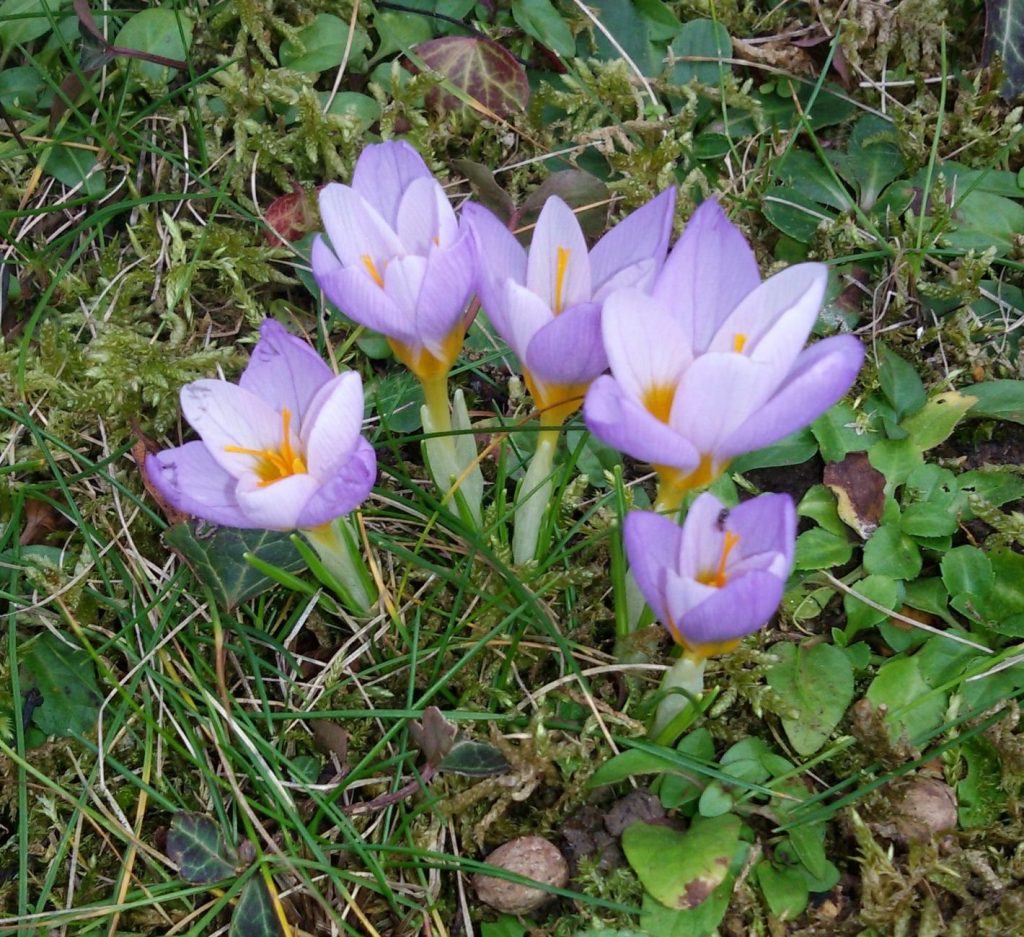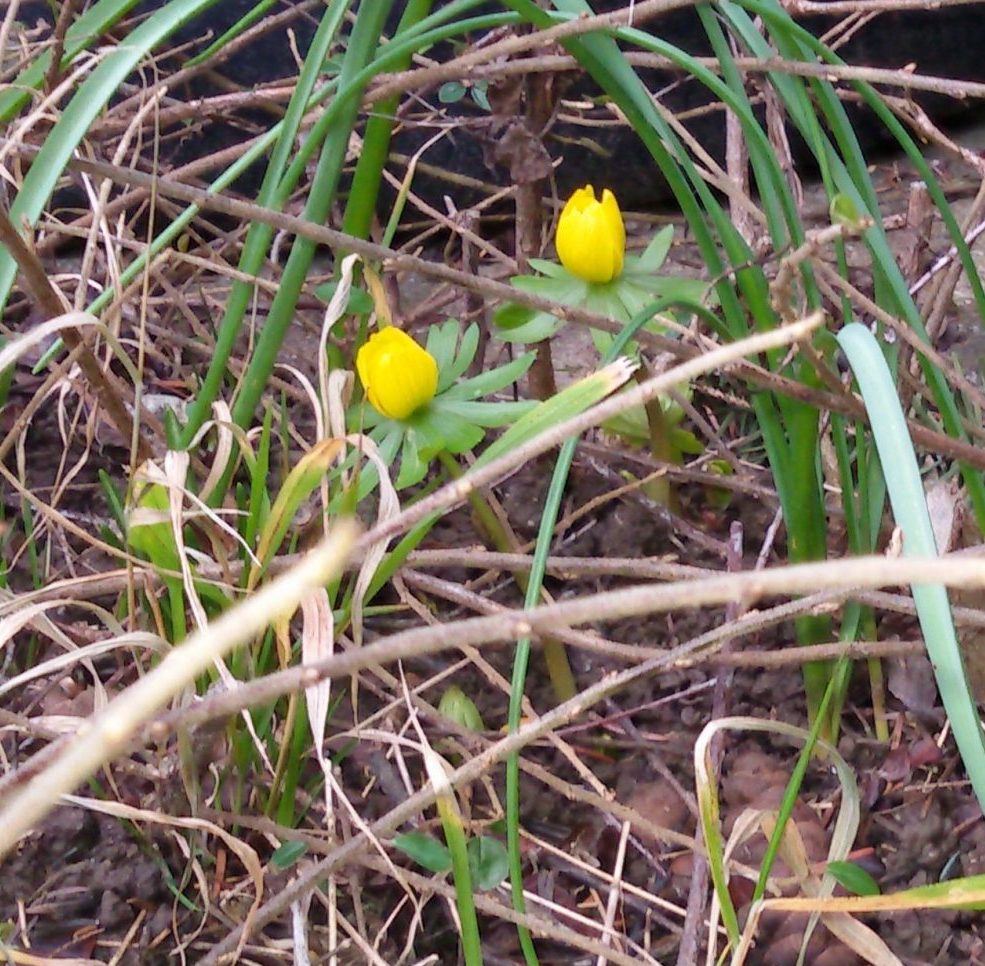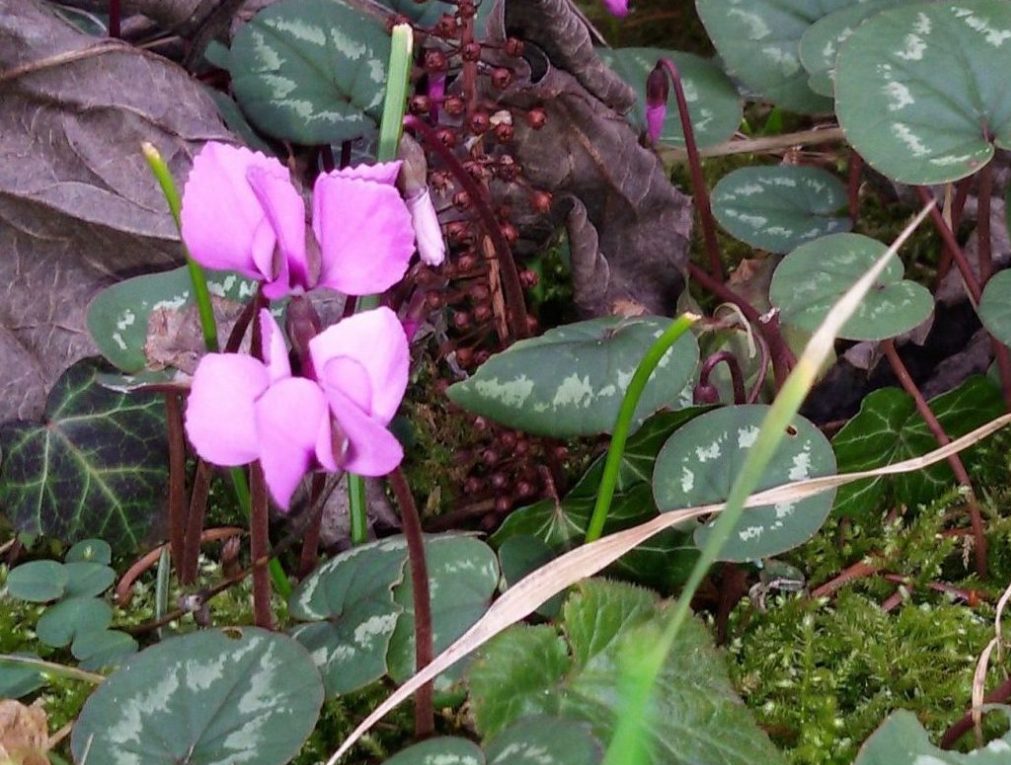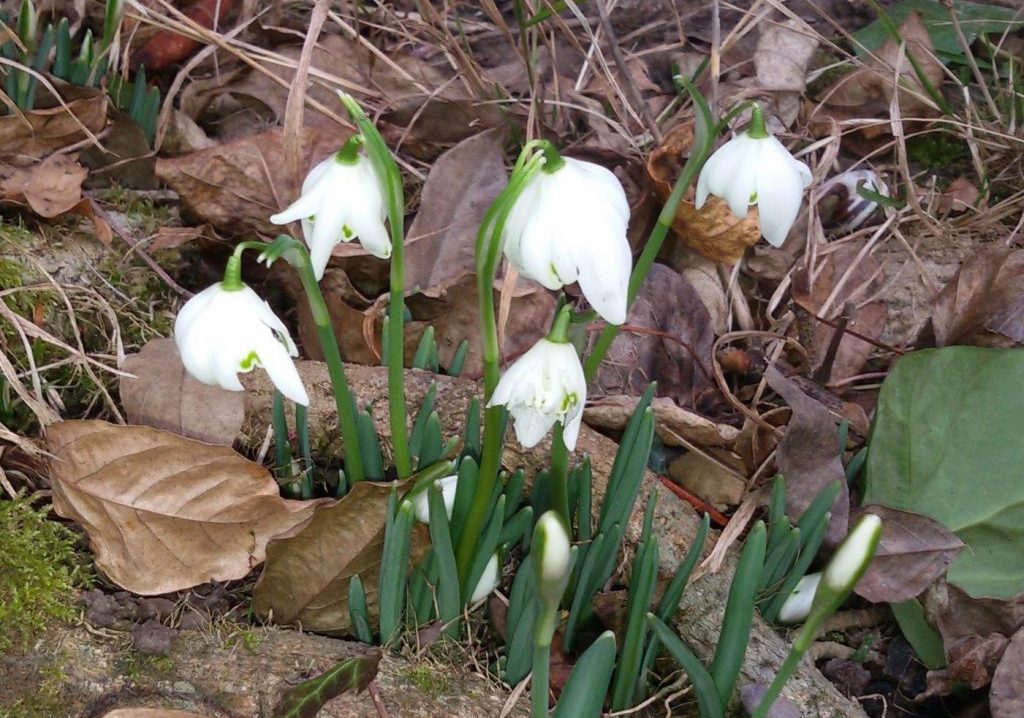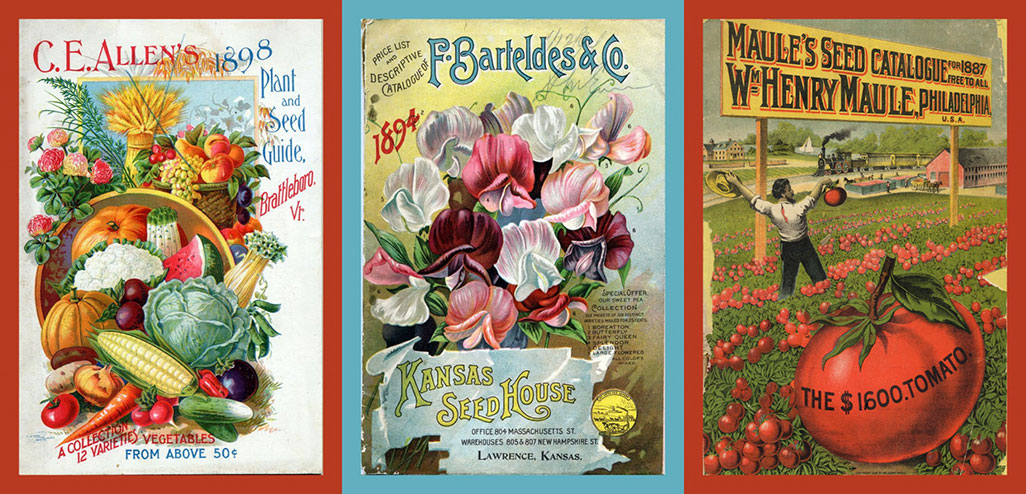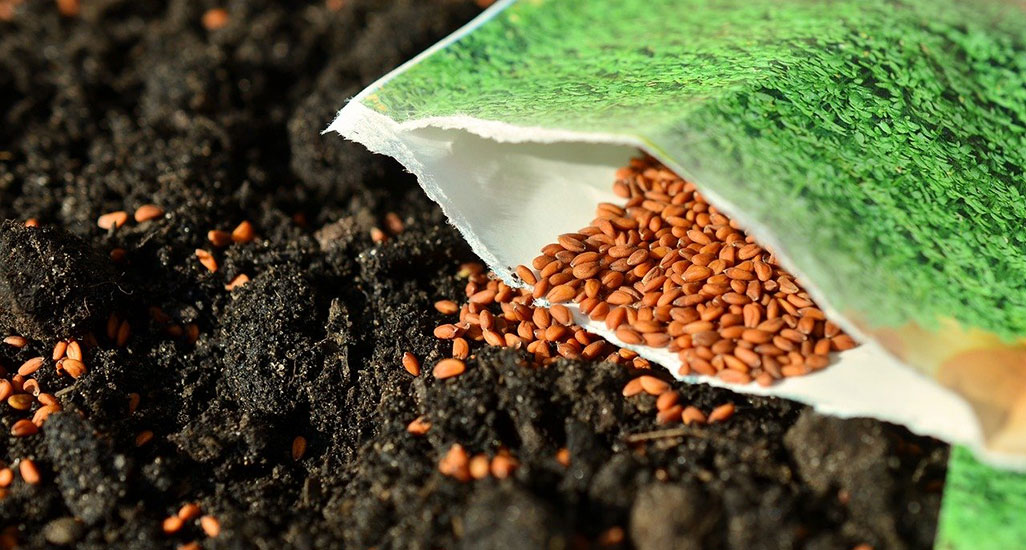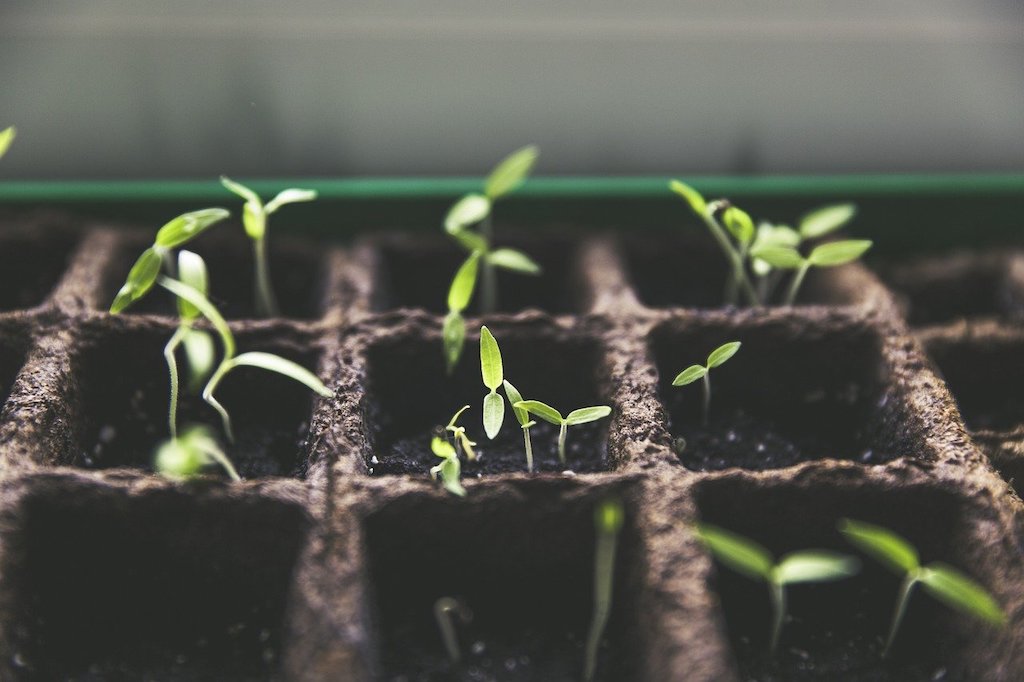
What kind of gardening jobs can there possibly be in February?
In the middle of February, I itch to get back into gardening. Granted, it’s early days, and there isn’t that much to do – but there is always something, even as early as February.∗
It is still winter, and the weather has been pretty wild and stormy, but I have spotted the first snowdrops, and even the first Winter Aconite is out! They are such a welcome sight – tentative signs that spring is on its way. Even though temperatures are far from balmy, Mother Earth is stirring…
It’s a botanical wake-up call. Suddenly, I feel restless, itching to do some gardening. But where to start, and what to do?
Indoor Gardening
Start some long-season plants indoors
I live in climate zone 7/8, so in February, gardening starts indoors. My house turns into a potting shed. I am not suggesting you should do the same. Maybe you are better organised. Perhaps you have a greenhouse or a heated cold frame where you can start the earliest seeds, protected from the cold.
If you live in northern latitudes, the growing season is limited. But you can extend it as far as possible by starting long-season plants, like chilli peppers or aubergines, in February indoors.
All you need are some starter trays and sterile starter soil that is not too nutrient-rich. It needs to be sterile so that your tender seedlings won’t have to compete for nutrients against random weeds whose seeds are lurking in the soil. This is especially important for slow-germinating seeds. Garden centres and DIY stores sell trays and starter soil, or you can make your own.
DIY seed trays
Those fancy seed trays make things a little easier: they often come with a clear plastic lid to prevent the moisture from evaporating. Sometimes, they even have a mechanism to open them without having to take the lid off. But you don’t really need that fancy stuff. It is easy to improvise by recycling your yoghurt pots, other plastic containers, or even empty milk cartons.
The right time
Here are the rules:
- Start warmth-loving, long-season plants 8-10 weeks before the last expected frost in your area.
- Water the seeds regularly with a watering sprayer to keep the soil moist, and if you use the DIY trays, cover them with cling film.
- Place the starter trays in a bright, warm spot, and you should see the first seedlings pop up after 7-10 days, on average.
- Don’t let the seedlings dry out! That would kill them!
- Once all danger of frost has passed and soil temperatures have risen to about 15 °C/60 °F, you can begin hardening off your ‘babies’ before you transfer them to their permanent spots.
- Harden off the plants by placing them outside during warm days and covering them at night.
——————————————————————–
At least, this applies to those in the Northern Hemisphere who live in growing zones 7-8. Every climate zone is different, and you may have a microclimate, so take this as general guidelines – there are no guarantees.
You might also be interested in:
How to plan a garden
Before you plant anything, try to really understand your garden.
Topiaria Gaudium
There is a strange fever going around. Strangely, it only affects gardeners: ‘Topiaria Gaudium Fever’. It is a special condition marked by high levels of excitement caused by the anticipation of the new gardening season.
What to Sow in January
Here are some veggies you can sow (indoors or under glass) at the end of January (about 4 weeks before the last expected frost):
Outdoor Gardening Jobs
Once the snow has melted and the soil has dried off, it is time to get busy and prepare the beds.
Loosen the soil and get rid of any invasive weeds. (Some may well be edible!) Mix in some fresh compost. Beds that won’t be used immediately should be mulched. Let the soil settle until the temperatures are high enough to transfer your first seedlings or sow directly into the prepared bed.
Sowing directly into the soil
Sow hardy crops, such as peas, early varieties of radish, parsley, spinach, carrots, lettuce, and onion sets directly into the soil. If you are worried about late frosts, start them in a cold frame and wait to transfer them until the soil has warmed to about 15 °C.
Carrots and parsley can be slow to sprout. You can start them in a dish of wet sand. Leave the dish in the cold for about a week, then take it indoors, and you should see your carrots sprout quickly. Carrots and root parsley like loose and even soil. Prepare their permanent spot well. Mix sand and garden soil and sift them together to create light soil.
Potatoes
Towards the end of February, you can start ‘chitting’ your spuds. For best results, use seed potatoes. Lay them out in egg cartons and put them in a sunny spot on the windowsill, with the side with the most ‘eyes’ facing up. Let them sprout for 5-6 weeks before planting them out.
Wait until early March or April, before sowing less hardy crops.
To avoid all your plants being ready for harvest at once, you can sow successively with a 10-day interval for a longer season.
Happy gardening!
Check out SeedsNow for your organic gardening supplies and Shop for Organic Vegetable Gardening Books.
Disclosure: The links to outside resources and books are affiliate links from which I earn a small commission to support this website.

